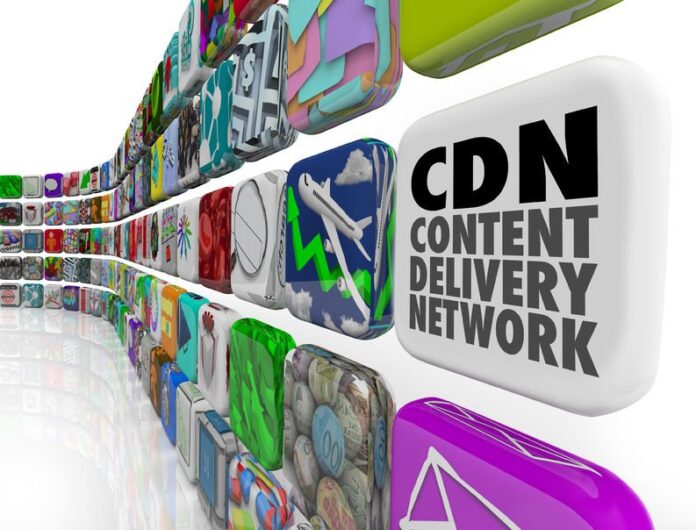Content delivery networks have evolved in order to more efficiently distribute digital content via the Internet. Read on to find out more CDN basics.
What is a CDN?
CDN stands for content delivery network. It is a network designed solely for the storage and distribution of content. A CDN is not a network with a central point – it is meant to be a distributed network, so that content can be accessed more quickly by end users because the content is stored closer to where they are.
How does it work?
The goal of a CDN, according to Frank Yue, technical marketing manager for F5 Networks’ service provider business, is to have the content as close to the end subscriber as possible, so that it can be accessed in the most efficient way possible – the fewest network hops and the least amount of time possible between the end user device and the content. CDN providers often connect content storage servers at the local ISP level, so that content providers don’t have to make deals with every individual ISP but can do through the CDN provider instead.
“You think about how content starts: it sits out there on the Internet, typically at a hosting website. People have all these content hosting storage servers somewhere, and it has to get from that server out to the end user,” explained James Segil, CMO of Verizon Digital Media Services, which provides CDN services.
The end user’s Web browser or gaming console will connect via a local route through their ISP, Segil said, and if the content is hosted on another network, it will pull the content back over the Internet hop between the ISPs in order to get it delivered over the last mile to the end user.
The end point makes little difference in the network routing, Segil said – an iPad connected to in-home Wi-Fi is connected to the same local router and essentially is treated the same way, in terms of content delivery, that an in-home computer plugged into the wired network would be. That changes slightly when the end device is on a mobile network, Segil said – then the cell tower that the device is connected to serves as that hardware connection, and that’s where the content is delivered to and through.
Justin Colwell of CableLabs described a CDN this way: Imagine that you lived in San Diego, but needed something from San Francisco. If that thing you needed were located in Los Angeles instead, it would take far less time and keep traffic down between San Diego and San Francisco if you could just go to L.A. instead.
CDNs, Colwell added, are best positioned to serve up oft-watched content because although they are closer to the user.
Who are major CDN and content delivery providers?
Some of the major players in CDNs include Akamai, Limelight, Level 3, CDNetworks, and Verizon Digital Media Services (which includes EdgeCast, which Verizon acquired last year and is being integrated into its Digital Media Services company — Segil founded EdgeCast). Netflix is building its own CDN as well, to improve end-user quality of experience.
Other players include Major League Baseball’s MLB Advanced Media platform, which relies on content delivery from companies including Level 3. As HBO develops its over-the-top streaming service, it has opted to go through MLB rather than develop its own infrastructure and platform.
Internet companies also have vast content storage of their own: Amazon.com, Google and Yahoo, for instance.
What role does the cloud play in a CDN?
“I think that’s one of the big changes that everyone is trying to figure out,” said Yue. “How do I get that content in the cloud? How do I get it into a cloud-like environment so that they don’t have to worry about being able to access this content, and how can the service provider be involved in that process? Because they do have a big role to play, because they provide the infrastructure and add the value.”
Yue points to current cloud-based services such as Apple’s iCloud and Google Drive as an example: users aren’t tied to a specific device in order to access and edit their content. Applications such as Facebook, which change in real-time, add both a front-end application through which the content is accessed, plus the fact that all of the content is personalized and rapidly changing – pulling up your Facebook feed means that the application needs to check back in every time in order to get the latest information for your feed, which is unique.
“It’s important to note that [subscribers] don’t know there their content is being cached in a content CDN – all they know is that they want to be able to access their content now, on any device they’re on,” Yue said.
What are some current trends in content delivery?
Some vendors are eyeing the possibility of pushing content caching even closer to the end user: to the home gateway, or potentially even to the end devices. As memory capacity grows on end devices, including smartphones and tablets, it opens up the possibility for prepositioning or storage of content on devices as well.
“I think as networks evolve, that some content will be pushed all the way out into the home, or on the device,” Colwell said.
Another trend Colwell sees is the potential for pre-positioning of content. So content like the first episode of the next season of “Game of Thrones,” which will be heavily watched, can be distributed and ready to watch weeks in advance, but only made available to end users on the release date – thereby shifting the network traffic considerably. Netflix, Colwell noted, has been putting in its own CDN infrastructure, and he expects more content owners to follow suit.
For more insight on content delivery networks and mobile content delivery, register for RCR Wireless News’ upcoming webinar on the topic.
This story has been corrected from an earlier version.
Image from 123RF

